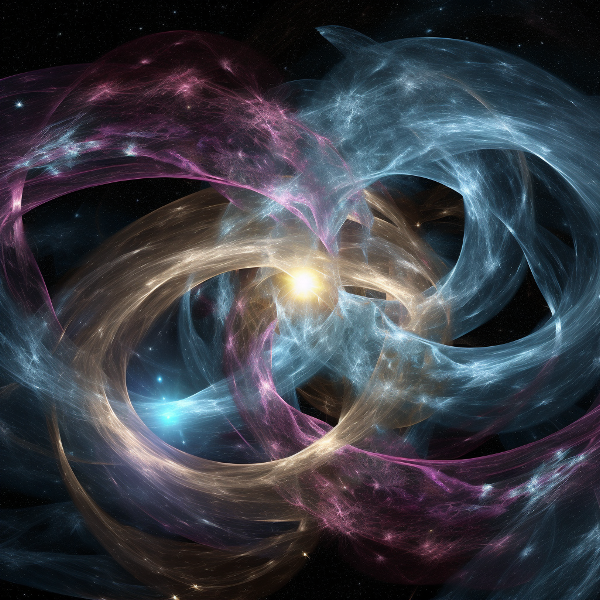Dec 05 2023
New Theory Unites Gravity and Quantum Mechanics
 One of the greatest mysteries of modern science is how to unite the two overarching theories of physics – quantum mechanics and general relativity. If physicists could somehow unite these two theories, which currently do not play well together, then we might get to a deeper “one theory to rule them all.”
One of the greatest mysteries of modern science is how to unite the two overarching theories of physics – quantum mechanics and general relativity. If physicists could somehow unite these two theories, which currently do not play well together, then we might get to a deeper “one theory to rule them all.”
Quantum mechanics essentially says that we do not live in a classical universe. Classical physics as it operates on the macroscopic scale is just the surface level, the end result of a quantum universe at the near atomic and smaller scale. At the quantum scale (not to be confused with the Quantum Realm fantasy of Marvel – don’t get me started), reality is quantized and probabilistic. Things that seem like magic on the macro scale are reality at the quantum scale, like wave particle duality and entanglement.
General relativity, rather, deals with the super big scale, spacetime itself. Einstein postulated that gravity is the result of spacetime being curved. Freely moving objects actually always travel in a straight line, but through curved space. Mass curves space, which is how mass creates gravity. This is, as least, a reasonable lay person’s understanding of these concepts.
Both quantum mechanics and general relativity, even though they may seem counterintuitive, are exceptionally successful theories. They are great at predicting the outcome of experiments, and now we have about a century of research actively trying to break and disprove these theories (in order to move beyond them) but not able to do so. They are among the most successful scientific theories in existence. Except, no one can figure out how to make them work together. How does gravity operate at the quantum scale? How does the universe behave when both quantum effects and relativistic effects are significant? This has implications for fully understanding things like black holes, and whether or not anti-gravity is possible.
There are currently two main theories attempting to unite quantum mechanics and general relativity – loop quantum gravity, and string theory. These two groups have been rivals in the physics community, and neither has been able to rise to the level of dominance. They are basically mathematical constructs, with LQG treating spacetime at the quantum scale as tiny loops, while string theory treats point particles as if they were vibrating strings. Both mathematical constructs have made progress in working out their inner workings, but neither has been able to conduct experiments to show that one theory is correct and the other wrong.
Now we have a third player in this field – the “postquantum theory of classical gravity”. This was presented in two recent papers. The idea here is that spacetime and gravity are actually classical, and not quantized. Rather, it tries to unite the two theories by modifying quantum mechanics. The theory “modifies quantum theory and predicts an intrinsic breakdown in predictability that is mediated by spacetime itself.”
The good thing here is that there appears to be ways to test whether gravity is quantized. If it is, then postquantum theory is ruled out. If it is not quantized, then loop quantum gravity and string theory are ruled out. This is not the same as proving any theory correct, but it’s a start. One of the paper authors, Oppenheim, said:
“Quantum theory and Einstein’s theory of general relativity are mathematically incompatible with each other, so it’s important to understand how this contradiction is resolved. Should spacetime be quantised, or should we modify quantum theory, or is it something else entirely? Now that we have a consistent fundamental theory in which spacetime does not get quantised, it’s anybody’s guess.”
There are two proposed ways to test postquantum theory. The first has to do with size of the fluctuations in spacetime. Both the quantized and non-quantized theories predict that spacetime must be a boiling sea of random fluctuations, but they differ on the scale of those fluctuations. If they are smaller than a certain size, postquantum theory is rule out. This, however, requires precisely measuring a mass multiple times to see if it fluctuates within our ability to measure. One project is working towards this experiment.
The other way to test the theory is to determine how long large particles can be in a superposition. Atomic and subatomic particles can experimentally be in a state where they are in two different locations simultaneously. According to quantum mechanics, this is true of even much larger objects, even macroscopic, but the duration decreases with size. It is negligible at the macroscopic scale, which is why the universe appears classical macroscopically. Postquantum theory predicts longer superposition times for larger particles, so again this can be used to experimentally rule out the theory.
The authors of this theory think it will take 20 years or so to conduct experiments capable of the precision necessary to test this new theory. Of course, we won’t know until is happens. But I like the fact that postquantum theory comes with concrete ways to disprove it.






